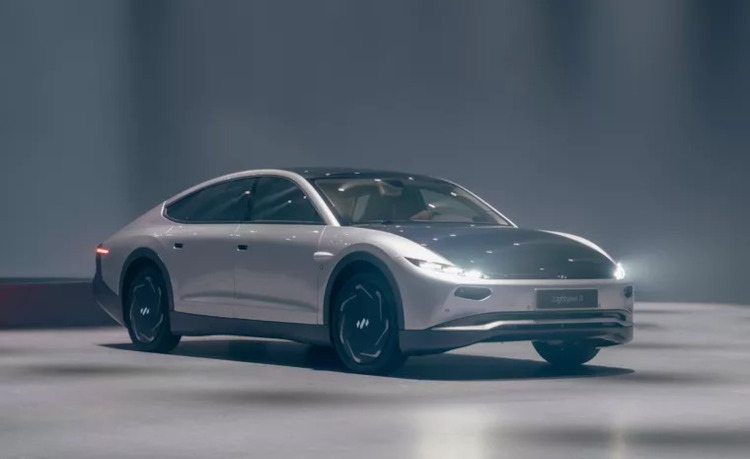LIGHTYEAR

Brand launches electric sedan with solar panel that can have a range of months without having to recharge the battery
Rumors about the expensive and extremely economical Lightyear electric car have been circulating for years, but only now has the global debut occurred and the developer has announced the availability of the first “solar” model for production. The company has already involved up to 500 people in the work and signed agreements with more than 100 suppliers – the machine is now ready for production. Unlike competitors, the novelty, under certain conditions, is able to work without external charging for months.
The electric car is a family sedan with solar panels with a total area of 5 m2, capable of generating electricity per day, allowing you to drive up to 70 km. The four-door sedan has a range of 560 km on the road at a speed of 110 km/h, even in sunny conditions. During the WLTP tests, the Lightyear 0 managed to cover 625 km, 4% more than the Tesla Model 3 Long Range with all-wheel drive. At the same time, the Lightyear model has 60 kWh traction batteries, and the same Tesla has 82 kWh. According to Lightyear, the car owes much of its performance to its low coefficient of drag (0.19), making it the most aerodynamic family car ever built. Bridgestone's custom tires also play an important role.
It is known that the novelty accelerates to 100 km/h in 10 seconds, the maximum speed is 160 km/h. While it is inferior to the Tesla Model 3 in this, it charges much faster. At the same time, although even on a cloudless day, solar cells do not allow you to fully charge the battery, their contribution is quite large – during the summer day, the car can receive enough solar energy to drive up to 70 km. According to the company, if a driver doesn't drive more than 50km a day, he can drive for months until he finally needs a charging station.
Solar cells are capable of adding a range of up to 10 km per hour, charging from the home electrical grid – 32 km per hour, when using a charging station with fast charging capability – up to 520 km per hour.
The interior of the five-seater is made from plant-based faux leather, recycled PET bottles and palm wood. At the same time, for a car made from recycled materials, the model will cost indecently expensive – these prices are unlikely to help offset the electricity savings. A total of 946 electric vehicles will be produced, deliveries will start in November this year. Each will cost customers $266,000. If successful, the company promises to release a version with a more affordable price tag of $32,000, which should start production in 2025.
Image source: Lightyear

Nenhum comentário:
Postar um comentário